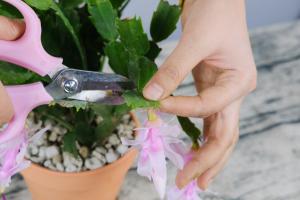How to Manage Overgrown Tomato Plants
Tomato plants are known for their fast growth and can easily become overgrown, which can affect their productivity and health. Overgrown tomato plants can cause problems such as decreased yields, stunted growth, diseases, and pests. If left unmanaged, they can also become unmanageable and difficult to control. Here are some tips on how to manage overgrown tomato plants:
1. Prune
One of the easiest and most effective ways of managing overgrown tomato plants is by pruning them. Pruning involves removing some parts of the plant, such as the leaves, shoots, and branches. This will help the plant to focus its energy on producing fruit, and will also promote air circulation and reduce the risk of fungal diseases. When pruning, be sure to use clean, sharp pruning shears and prune only the parts that are unhealthy or interfering with the plant's growth. Leave the healthy leaves and stems intact.
2. Stake or Cage
Staking or caging your tomato plants is essential for supporting their growth and preventing them from becoming overgrown. This technique involves using stakes or cages to support the plants and help them grow upright. Stakes are ideal for determinate tomato varieties that grow to a specific height, while cages are better suited for indeterminate varieties that continue to grow and produce fruit throughout the season.
3. Fertilize
Overgrown tomato plants may require extra nutrients to support their growth and productivity. Fertilizing your plants with a balanced fertilizer, high in phosphorus and potassium, will help them to grow and produce more fruit. Apply the fertilizer once every two weeks or as needed, following the instructions on the package.
4. Provide Adequate Watering
Adequate watering is essential for healthy tomato plants, especially during periods of drought or extreme heat. Overgrown tomato plants require more water than younger, smaller plants. Water your plants deeply and regularly, and avoid watering the leaves or fruit to reduce the risk of fungal diseases.
5. Protect from Pests and Diseases
Overgrown tomato plants are more susceptible to pests and diseases, which can affect their growth and productivity. Protect your plants by inspecting them regularly for pests, such as aphids or tomato hornworms, and removing them by hand or with a suitable insecticide. To prevent diseases, avoid watering the leaves or fruit and provide proper air circulation around the plants.
In conclusion, managing overgrown tomato plants requires careful attention and proper care. Pruning, staking or caging, fertilizing, providing adequate watering, and protecting from pests and diseases are all important strategies for keeping your plants healthy and productive. With a little effort and patience, you can enjoy a bountiful tomato harvest throughout the growing season.

 how many times do yo...
how many times do yo... how many planted tre...
how many planted tre... how many pine trees ...
how many pine trees ... how many pecan trees...
how many pecan trees... how many plants comp...
how many plants comp... how many plants can ...
how many plants can ... how many plants and ...
how many plants and ... how many pepper plan...
how many pepper plan...































